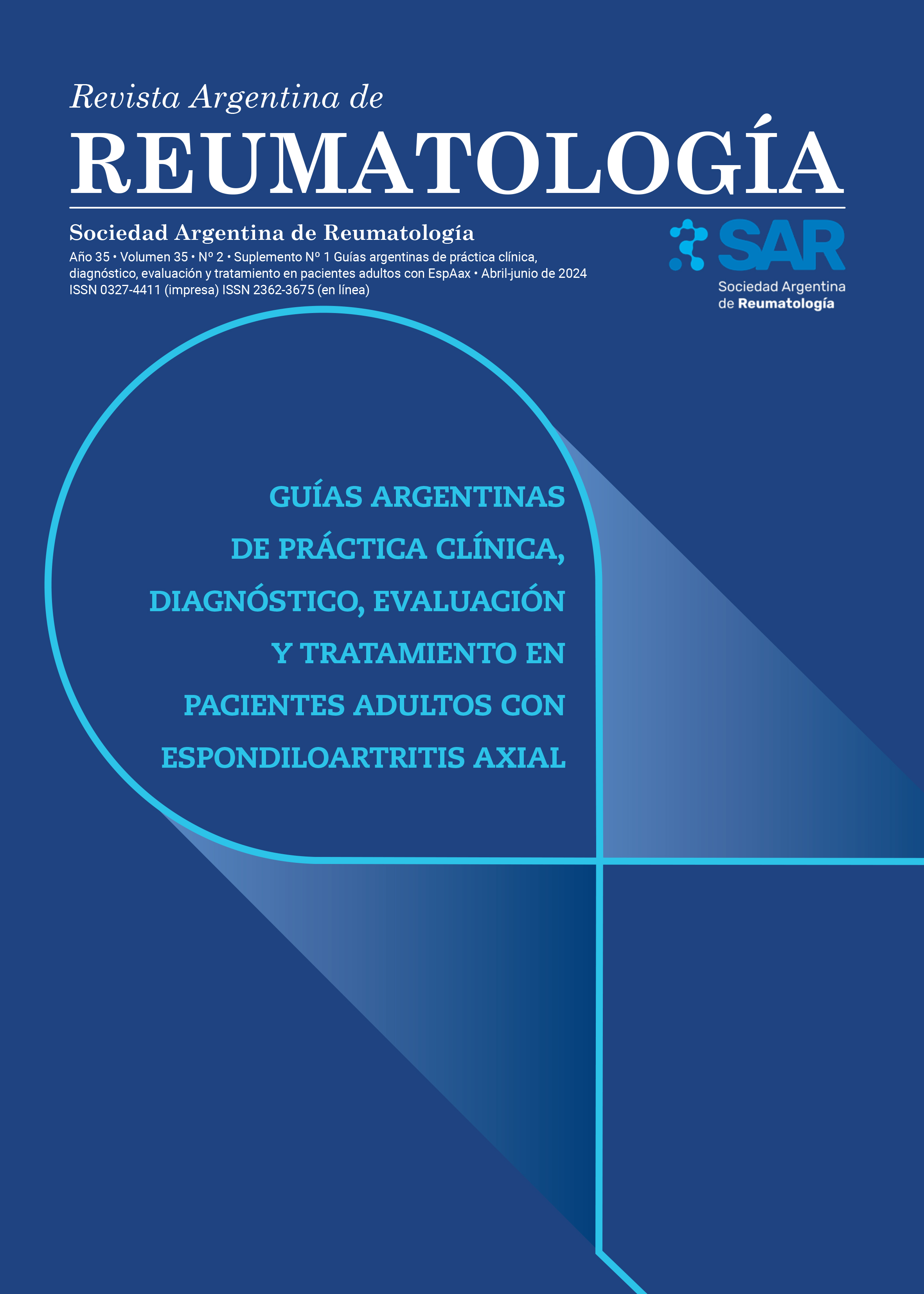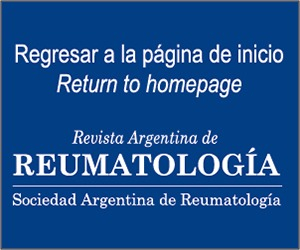Supplement PICO Questions and evidence
Argentine guidelines for clinical practice, diagnosis, evaluation and treatment in adult patients with EspAax
Abstract
PICO QUESTION 1: In adult patients with axial spondyloarthritis (axSpA), what is the efficacy and safety of nonsteroidal anti-inflammatory drugs-NSAIDs (including COx2)? PICO QUESTION 2: In patients with active axSpA, are continuous or on-demand NSAIDs recommended? PICO QUESTION 3: In adult patients with axSpA, are certain NSAIDs more effective than other NSAIDs in improving outcomes? PICO QUESTION 4: What is the efficacy/safety of TNFi vs NSAIDs/PLACEBO agents in adult patients with axSpA? PICO QUESTION 5. What is the efficacy/safety of IL-17i vs NSAIDs/PLACEBO agents in adult patients with axSpA? PICO QUESTION 6: In adult patients with axSpA, what is the efficacy and safety of JAKi? PICO QUESTION 7: In adult patients with axSpA, is any TNFi superior to another TNFi for controlling disease activity? PICO QUESTION 8: What is the efficacy/safety of bisphosphonates vs NSAIDs/PLACEBO in adult patients with axSpA? PICO QUESTION 9: In adult patients with axSpA, what is the efficacy and safety of adding a conventional DMARD to treatment with biologics (combination therapy)? PICO QUESTION 10: In adults with active axSpA despite treatment with the first TNFi, is switching to a different TNFi more effective than switching to a non-TNFi biologic to improve outcomes? PICO QUESTION 11: In adults with axSpA, what is the efficacy/safety of abatacept vs NSAIDs/PLACEBO? PICO QUESTION 12: In adults with axSpA, what is the efficacy/safety of ustekinumab vs. NSAIDs/PLACEBO? PICO QUESTION 13: In adults with axSpA, what is the efficacy/safety of rituximab vs. NSAIDs/PLACEBO in adult patients with axSpA? PICO QUESTION 14: In adults with axSpA, what is the efficacy/safety of anti IL-23 vs. NSAIDs/PLACEBO? PICO QUESTION 15: In adults with axSpA, what is the efficacy/safety of anti IL-6 vs. NSAIDs/PLACEBO? PICO QUESTION 16: In adults with axSpA, what is the efficacy/safety of apremilast vs. NSAIDs/placebo? PICO QUESTION 17: In adult patients with axSpA, are innovator biologics more effective than biosimilars in improving outcomes? PICO QUESTION 18: In adult patients with stable axSpA on a biologic, is gradual tapering of the biologic dose more effective than not tapering in improving outcomes? PICO QUESTION 19: In adult patients with stable axSpA on a biologic, is discontinuing the biologic more effective than not discontinuing in improving outcomes? PICO QUESTION 20: In adults with axSpA, are systemic glucocorticoids more effective than not using them in improving outcomes? PICO QUESTION 21: In adult patients with axSpA, is treatment with locally administered parenteral glucocorticoids more effective than not using them in improving outcomes? PICO QUESTION 22: In adult patients with axSpA and uveitis, are some biologic medications more effective than others in decreasing uveitis recurrences? PICO QUESTION 23: In adult patients with axSpA and inflammatory bowel disease (IBD), are certain biologic medications more effective than others in improving outcomes? PICO QUESTION 24: In adult patients with axSpA, is some form of physical therapy more effective than no physical therapy in improving health status and functional status? PICO QUESTION 25: In adult patients with axSpA, are aquatic physical therapy interventions more effective than land-based physical therapy interventions in improving health status and functional status? PICO QUESTION 26: In adult patients with axSpA, are aerobic exercises more effective than physical therapy in improving health status and functional status? PICO QUESTION 27: In adult patients with axSpA, is high-intensity exercise more effective than no high-intensity exercise in improving health status and functional status? PICO QUESTION 28: In adult patients with axSpA, is an exercise program (home exercise plan, pilates, or any exercise with prescription parameters) more effective than no exercise program in improving health status and functional status? PICO QUESTION 29: In adults with stable axSpA, are unsupervised back exercises more effective than no exercise in improving health status and functional status? PICO QUESTION 30: In adults with active or stable axSpA and spinal fusion or advanced spinal osteoporosis, is spinal manipulation (chiropractic or osteopathic) more effective than no spinal manipulation in improving health status and functional status? PICO QUESTION 31: In adults with axSpA, is a treat-to-target strategy with an ASDAS target of <1.3 (or <2.1) more effective than a symptom-based treatment strategy in improving outcomes? PICO QUESTION 32: In adult patients with axSpA, is regular interval use and monitoring of BASDAI, ASDAS, or another index more effective than usual care without monitoring of any index in improving outcomes? PICO QUESTION 33: In adult patients with axSpA, is regular interval use and monitoring of C-reactive protein (CRP) or erythrocyte sedimentation rate (ESR) levels more effective than usual care without regular monitoring of CRP or ESR in improving outcomes? PICO QUESTION 34: In adult patients with stable axSpA, is performing magnetic resonance imaging (MRI) of the spine or pelvis to confirm quiescence more effective than not obtaining an MRI in improving outcome? PICO QUESTION 35: In adult patients with axSpA on any treatment, is obtaining repeat spine radiographs at a scheduled interval (e.g., every 2 years) more effective than not obtaining scheduled radiographs in improving outcomes?References
.-
Copyright (c) 2024 Argentine Journal of Rheumatology

This work is licensed under a Creative Commons Attribution-NonCommercial-NoDerivatives 4.0 International License.










